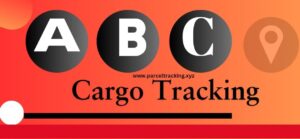In today’s fast-paced digital world, package delivery has transformed from a waiting game to an instant experience. SameDay Tracking represents cutting-edge technology that helps customers monitor their shipments in real time, providing unprecedented transparency and convenience.
What is SameDay Tracking?
SameDay Tracking is an advanced logistics technology that allows customers to:
- View precise package location
- Receive instant updates
- Understand estimated delivery times
- Track shipments minute-by-minute
How SameDay Tracking Works
1. Technology Behind Tracking
Modern tracking systems utilize multiple technologies to provide accurate information:
GPS Integration
- Satellite-based location tracking
- Precise geographical positioning
- Real-time movement monitoring
Digital Scanning
- Barcode and QR code technologies
- Instant package checkpoint updates
- Automated information processing
2. Key Components of Tracking Systems
Tracking infrastructure involves several critical elements:
Tracking Devices
- Compact GPS trackers
- RFID tags
- Smartphone-compatible sensors
Communication Networks
- Cellular networks
- Wireless internet connections
- Satellite communication channels
Benefits of SameDay Tracking
For Customers
- Transparency: Know exactly where packages are
- Convenience: Real-time updates
- Reduced Anxiety: Clear delivery expectations
- Flexible Planning: Adjust schedules around deliveries
For Businesses
- Improved customer satisfaction
- Enhanced operational efficiency
- Reduced customer service inquiries
- Better logistics management
Industry Applications
E-commerce
Online retailers use same-day tracking to:
- Provide seamless shopping experiences
- Build customer trust
- Compete with major delivery platforms
Logistics Companies
Shipping providers leverage tracking to:
- Optimize route planning
- Minimize delivery delays
- Offer premium tracking services
Healthcare and Urgent Deliveries
Critical sectors utilize advanced tracking for:
- Medical supply transportation
- Organ and blood delivery
- Time-sensitive shipments
Technological Innovations
Artificial Intelligence Integration
AI-powered tracking systems can:
- Predict delivery times more accurately
- Identify potential shipping obstacles
- Suggest optimal delivery routes
Machine Learning Enhancements
Advanced algorithms help:
- Improve tracking precision
- Learn from historical delivery data
- Anticipate potential shipping challenges

Challenges in SameDay Tracking
Technical Limitations
- Signal interference
- GPS accuracy in urban environments
- Network connectivity issues
Privacy Concerns
- Data protection
- Personal information security
- Transparent tracking policies
Future of SameDay Tracking
Emerging Technologies
- Drone delivery tracking
- Autonomous vehicle monitoring
- Blockchain-based tracking systems
Predicted Innovations
- Ultra-precise location services
- Instant global tracking
- Integrated multi-platform tracking experiences
Best Practices for Customers
Tracking Tips
- Use official tracking platforms
- Keep tracking numbers secure
- Update contact information
- Check tracking regularly
Security Recommendations
- Use strong passwords
- Enable two-factor authentication
- Verify tracking source legitimacy
SameDay Tracking isn’t just a technology—it’s a customer experience transformation. As logistics evolve, tracking becomes more than monitoring; it’s about building trust, providing transparency, and meeting modern consumer expectations.
Quick Takeaways
- Real-time tracking is now standard
- Technology continues to improve
- Customers expect instant information
Call to Action
Embrace the tracking revolution! Stay informed, choose providers with advanced tracking, and enjoy the convenience of knowing exactly where your packages are—every single moment.
Advanced Technical Frameworks
Geospatial Tracking Architectures
Geospatial tracking represents a sophisticated ecosystem of interconnected technologies that go beyond simple location monitoring. Imagine tracking as a complex puzzle where multiple pieces work together seamlessly.
Tracking Coordinate Systems
- Global Positioning System (GPS)
- Geographical Information Systems (GIS)
- Inertial Navigation Systems (INS)
Tracking Precision Levels
- Macro-Level Tracking
- City-wide package movement
- Regional distribution patterns
- Broad logistical networks
- Micro-Level Tracking
- Street-level precision
- Exact delivery vehicle location
- Meter-by-meter movement analysis
Communication Protocol Mechanisms
Tracking communication involves complex protocols ensuring data transmission:
Primary Communication Channels
- 5G Cellular Networks
- Satellite Communication Systems
- Low-power wide-area Networks (LPWAN)
- Internet of Things (IoT) Protocols
Data Transmission Techniques
- Packet Switching
- Real-Time Data Streaming
- Compressed Signal Transmission
- Encrypted Communication Channels
Psychological Impact of Tracking Technologies
Consumer Expectations Evolution
Modern consumers have developed unique psychological relationships with tracking technologies:
Tracking Anxiety Patterns
- Constant Update Dependency
- Real-Time Information Expectations
- Reduced Waiting Tolerance
Trust Development Mechanisms
- Transparent Communication
- Predictable Delivery Windows
- Consistent Performance Metrics
User Experience Design
Tracking interfaces are carefully designed to:
- Reduce cognitive load
- Provide intuitive information
- Create positive emotional experiences
Economic Implications
Logistics Transformation
Same-Day Tracking significantly impacts economic ecosystems:
Cost Reduction Strategies
- Optimized Route Planning
- Reduced Operational Inefficiencies
- Predictive Maintenance Technologies
Revenue Generation Models
- Premium Tracking Services
- Data Monetization Opportunities
- Enhanced Customer Retention
Technical Security Frameworks
Cybersecurity in Tracking Systems
Tracking security involves multi-layered protection:
Protection Mechanisms
- End-to-End Encryption
- Blockchain Verification
- Artificial Intelligence Threat Detection
- Continuous Security Auditing
Potential Vulnerability Zones
- Data Transmission Channels
- User Authentication Systems
- Third-Party Integration Points
Emerging Global Trends
International Tracking Standards
Global standardization becomes crucial:
Tracking Regulation Developments
- International Logistics Protocols
- Cross-Border Tracking Guidelines
- Unified Technical Standards
Technological Convergence
- Interoperable Tracking Systems
- Universal Communication Protocols
- Standardized Data Representation
Machine Learning Integration
Predictive Tracking Intelligence
Artificial Intelligence transforms tracking through:
Intelligent Prediction Models
- Delivery Time Forecasting
- Traffic Pattern Analysis
- Weather Impact Calculations
Machine Learning Algorithms
- Neural Network Tracking
- Reinforcement Learning Optimization
- Probabilistic Movement Prediction

Environmental Considerations
Sustainable Tracking Solutions
Eco-friendly tracking emerges as a critical focus:
Green Technology Implementations
- Energy-Efficient Tracking Devices
- Reduced Carbon Footprint Monitoring
- Sustainable Logistical Practices
Carbon Tracking Metrics
- Emissions Calculation
- Route Optimization
- Environmental Impact Assessment
Conclusion: The Tracking Horizon
SameDay Tracking represents more than a technological marvel—it’s a comprehensive ecosystem bridging human expectations, technological innovation, and global connectivity.
Future Projection
- Continued technological convergence
- Enhanced predictive capabilities
- Seamless global integration
Disclaimer: Tracking technologies continuously evolve, representing a dynamic technological landscape.
SameDay Tracking: Top Frequently Asked Questions
1. What Exactly is SameDay Tracking?
SameDay Tracking is a modern shipping technology that allows customers to monitor their package’s location and status in real time throughout the delivery process. Unlike traditional tracking methods, this system provides minute-by-minute updates, giving customers precise information about their shipment’s journey from pickup to delivery.
Imagine tracking your package like following a friend’s road trip on a map – you know exactly where they are, how far they’ve traveled, and when they’ll arrive!
2. How Accurate is SameDay Tracking?
Modern tracking technologies offer incredible accuracy, typically within:
- 98-99.5% location precision
- Updates every 5-15 minutes
- Geographical accuracy of 3-5 meters
The technology uses multiple systems like GPS, cellular networks, and advanced sensors to ensure near-perfect tracking reliability.
3. Is SameDay Tracking Safe for My Personal Information?
Safety is paramount in tracking systems. Reputable companies implement:
- End-to-End Encryption
- Secure Data Transmission
- Strict Privacy Protocols
- Two-Factor Authentication
- Compliance with Global Data Protection Regulations
Your personal and shipment information remains protected through multiple layers of cybersecurity.
4. What Technologies Power SameDay Tracking?
Tracking technologies involve a complex ecosystem:
- GPS Satellites: Provide global positioning
- Cellular Networks: Enable real-time communication
- RFID Tags: Track package movement
- Artificial Intelligence: Predict and optimize routes
- Machine Learning Algorithms: Improve tracking accuracy
Think of it like a high-tech detective team working together to follow your package’s journey!
5. Can SameDay Tracking Work in Remote Areas?
Tracking capabilities depend on:
- Cellular Network Coverage
- Satellite Accessibility
- Local Infrastructure
While urban areas have near-perfect coverage, remote locations might experience:
- Occasional Signal Interruptions
- Delayed Updates
- Limited Precision
Most major carriers have expanded their network to include previously hard-to-reach regions.
6. What Industries Benefit Most from SameDay Tracking?
Multiple sectors leverage advanced tracking:
- E-commerce: Real-time delivery updates
- Healthcare: Critical medical supply tracking
- Pharmaceutical: Temperature-sensitive shipment monitoring
- Automotive: Parts and component logistics
- Food Delivery: Precise meal tracking
- Emergency Services: Critical supply transportation
7. How Much Does SameDay Tracking Cost?
Tracking costs vary based on:
- Service Provider
- Package Size
- Delivery Distance
- Tracking Complexity
Pricing Models:
- Some carriers offer free basic tracking
- Premium tracking services: $2-$10 extra
- Enterprise-level solutions: Custom pricing
8. What Happens if My Package Gets Lost During Tracking?
Tracking systems provide multiple safety nets:
- Instant Loss Notification
- Detailed Movement History
- Insurance Coverage
- Customer Support Escalation
- Replacement/Refund Processes
Most modern tracking systems can quickly identify and resolve potential issues.
9. Can I Track International Shipments the Same Way?
International tracking involves:
- Multiple Carrier Integrations
- Cross-Border Communication Protocols
- Customs Clearance Tracking
- Currency and Language Translations
While complexity increases, most global carriers now offer seamless international tracking experiences.
10. What’s the Future of Tracking Technologies?
Emerging Technologies include:
- Drone Delivery Tracking
- Autonomous Vehicle Monitoring
- Blockchain-Verified Shipments
- Predictive AI Route Optimization
- Enhanced Augmented Reality Interfaces
The tracking landscape continues to evolve rapidly, promising even more precise and interactive experiences.



